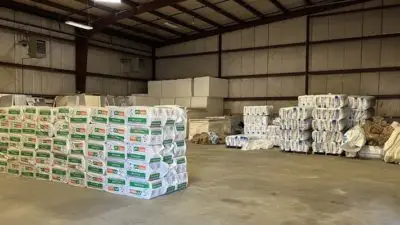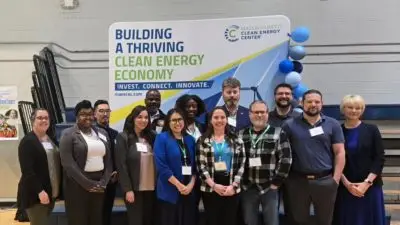While winter can bring different energy challenges than the spring or summer, home energy efficiency doesn’t have a season. Making your home more energy efficient can help you save year-round, no matter if there are 2 feet of snow outside or if the sun is shining brightly.
As temperatures begin to rise, it’s a good time to start thinking about a plan to save energy and money as we head into a new season.
Use the Natural Light
The first day of spring is behind us and the days are finally getting longer, reducing the need for artificial lighting. According to the U.S. Energy Information Administration (EIA), lighting made up about 4% of total U.S. residential electricity consumption in 2021. Using the natural sunlight that comes through your windows to light your home, also known as daylighting, can help reduce this contribution and the costs that come with it.
According to the U.S. Department of Energy (DOE), north-, east-, and west-facing windows are best for daylighting. “North-facing windows admit relatively even, natural light, producing little glare and almost no unwanted summer heat gain,” says the U.S. DOE. East-facing windows are great for morning light, while west-facing windows provide good light in the evening, but the U.S. DOE warns that they could welcome unwanted heat during hot months ahead.
Create a Cross-Breeze
Does it feel cooler outside than it does inside your home? Open your windows to get rid of the hot indoor air and invite the cooler air inside to replace it. Opening windows directly across from each other is a great way to create a cross-breeze. This cools the area in the direct path of the air flow, which makes this approach ideal for a smaller place like an apartment.
If you have a bigger home or a place with multiple levels, it’s better to give the air a longer path to travel. You should open windows at the lowest and highest points in your home to create a chimney effect. Cool air will come through the windows at the lowest point and as it warms up, the air will rise and travel up, and eventually out the windows at the highest point.
Place a Fan at Your Basement Stairs
Don’t let the cool basement air go to waste – prop the door open and place a box fan there to push the cool air upstairs to your main living spaces. While we’re on the subject of fans, make sure to use them all! We’re talking about ceiling fans when you’re in the room, your bathroom fan while you’re taking a shower, and the exhaust fan while you’re cooking. They will all help reduce moisture and keep your home cooler – and your cooling system doesn’t have to work as hard!
According to the U.S. DOE, if you use your ceiling fan (make sure that it’s going in the right direction!), you can raise your thermostat setting 4 degrees without noticing a temperature difference.
Revamp Your Landscaping
If you’re in need of a spring/summer project, working outside at your landscaping could be just the thing to help you save energy and money this season and for years to come.
Did you know that an energy-efficient landscape plan can reduce an unshaded home’s cooling costs by 15% to 50%? Studies have shown that shading can decrease surrounding air temperatures by up to 9˚F!
According to the U.S. DOE, “air temperatures directly under trees can be as much as 25˚F cooler than air temperatures above nearby blacktop.”
Here are some landscaping tips, specifically for the Massachusetts region, from the U.S. DOE and the Office of Energy Efficiency & Renewable Energy (EERE):
- Shade south and west windows/walls from the sun.
- Plant deciduous trees to the south of your home for roof shading. A 6-foot to 8-foot deciduous tree will start to shade your windows within the first year and will shade the roof in 5-10 years.
- Plant trees with crowns lower to the ground (to the west) for shade from the low afternoon sun.
- Use trees, shrubs, and groundcover plants to shade the ground surrounding your home. This minimizes heat radiation and cools the air before it gets to your home.
There are plenty of ways to save energy and money this season and all the seasons that follow. If you’re interested in learning about how your home consumes energy, the Sponsors of the Mass Save® program offer Home Energy Assessments at no-cost to MA residents like you. A perk of doing an assessment, is that once it’s completed, you unlock benefits like 100% off air sealing, 75%-100% off insulation, up to $10,000 in heat pump rebates, and more! Click here or call (781) 305-3319 to schedule now!
Resources:








